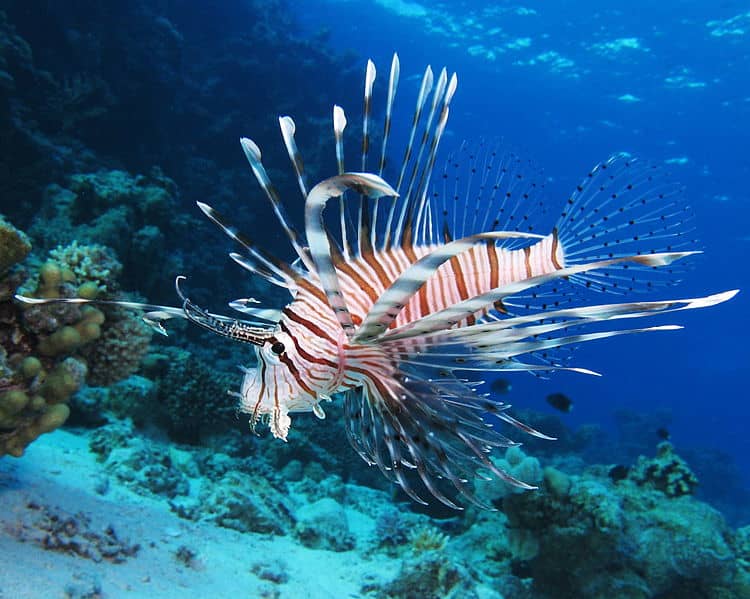Lionfish Invasion Continues, Scientists Seek Submersible Solutions
OutdoorHub Reporters 07.03.13

Biologists working to preserve America’s eastern coasts can generally agree on one thing: lionfish are one of the worst nonnative species to hit the country’s marine ecosystem in recent memory. The problem has become so severe that conservationists in Florida are considering bringing the fight to the fish by the use of small suction device-equipped submersibles. They should make easy targets, as according to recently-unearthed evidence, the invasive predators appear to be getting quite obese.
Lionfish were first discovered off the coast of Florida in 1985, believed to have been released by careless aquarium owners. The lionfish is native to the Indo-Pacific region, but managed to thrive and quickly outpace native species in the warm lower stretches of the Atlantic. The National Oceanic and Atmospheric Administration (NOAA) has recorded sightings of the species along the American East Coast and as far away as the Bahamas, where the fish are accused of severely depleting native prey fish populations.
Lionfish are voracious predators that dine primarily on small fish. The species they prey on are often vital to the coral reefs in which they live, and the invasive animals have been reducing their targets’ ranks by as much as 70 percent. The predators also carry venomous spines that can injure and paralyze recreational divers. Worse yet, ocean currents are expected to disperse the lionfish to waters where populations have not been established.
According to NOAA in a 2010 study conducted in collaboration with North Carolina State University, roughly 27 percent of mature lionfish would have to be culled monthly for an entire year in order to halt the invasive population’s growth in Atlantic waters. Keene Haywood, adjunct professor at the University of Miami’s Rosentiel School, believes he can contribute to that goal with a rather novel idea. During a dive in a five-person submersible off Broward County in Florida, Haywood noticed that the lionfish were attracted to the craft.
“There was a small school of fish using the tires to hide, and the lionfish actually went for them,” Haywood told the Miami Herald. “The lionfishes’ bellies looked full.”
Haywood’s observations led to a project in the works by submarine company OceanGate’s CEO Stockton Rush to build a suction device that will pull lionfish into a holding tank inside the submersible. The idea, while only in its earliest stages, is being considered by NOAA.
Slate.com writer Christie Wilcox also discovered another development in the fight against the lionfish. During a visit with National Centers for Coastal Ocean Science ecologist James Morris, it was discovered that lionfish are getting fat. So obese, in fact, that the fish they dissected were suffering from early signs of liver damage. Lionfish have few natural predators, especially in the Atlantic. An abundance of easily-caught prey that are not traditionally a part of their diet means that these lionfish are living the high life–at the expense of the local reefs, and perhaps their personal health.
Scientists are still looking for alternative methods to slow or stop the spread of lionfish, but the fish are proving resilient. Many states, like Florida, have relaxed their fishing regulations to encourage anglers to target the invasive species.

